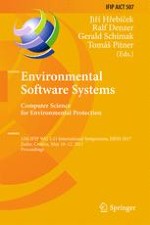2017 | Buch
Environmental Software Systems. Computer Science for Environmental Protection
12th IFIP WG 5.11 International Symposium, ISESS 2017, Zadar, Croatia, May 10-12, 2017, Proceedings
herausgegeben von: Prof. Dr. Jiří Hřebíček, Ralf Denzer, Gerald Schimak, Tomáš Pitner
Verlag: Springer International Publishing
Buchreihe : IFIP Advances in Information and Communication Technology
